Triumph T120 Bonneville Review | Test
Trevor Hedge recently spent a couple of days in the Adelaide Hills on the new Triumph T120 Bonneville and T120 Black. Almost sixty years after the original T120 shone brighter than all its peers, this new British classic is doing exactly that again in the retro roadster market.
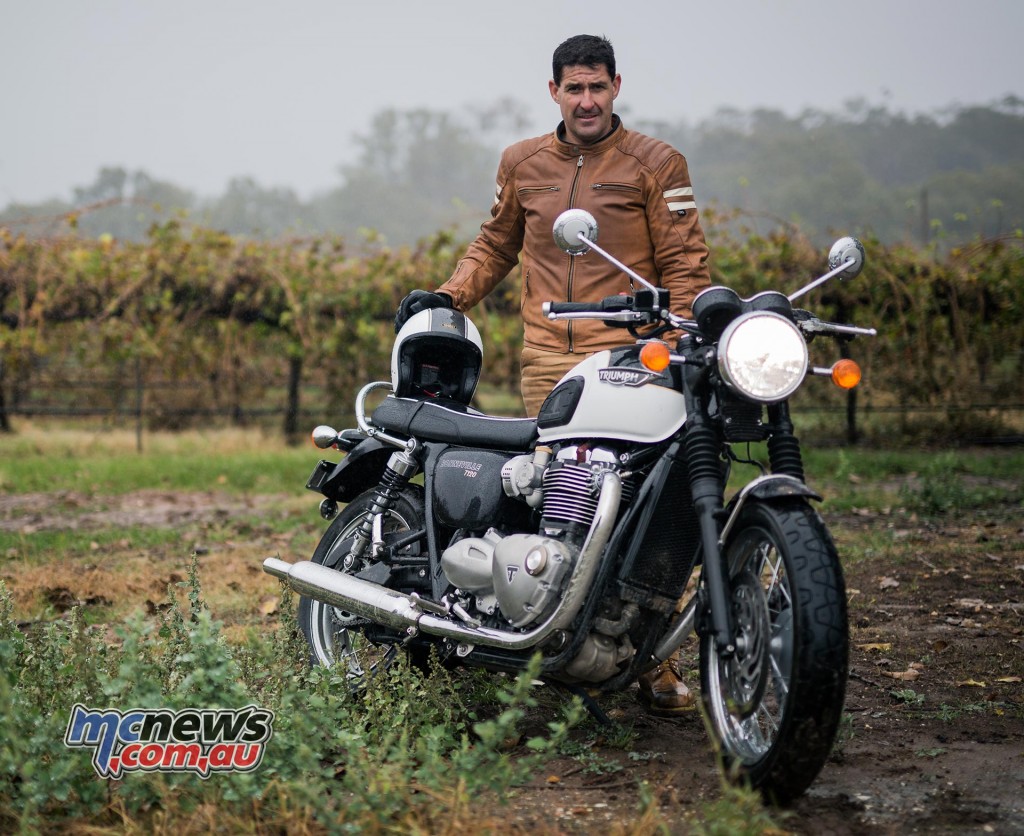
After recently introducing the ripper Street Twin (itself upsized from 865cc to a full 900cc), Triumph has just launched its T120 Bonneville models, ramping their capacities up to a delicious 1200cc.
I had already been suitably impressed by Triumph’s Street Twin. It didn’t pretend to be anything it wasn’t. Just an honest, handsome, predominantly city-based roadster designed to out-shine machines like Harley-Davidson’s Sportster, and other similarly-priced bikes for comfortably blasting around the city. Enough go, stop and cornering to have a bit of fun, with a healthy dose of style to match, and at a very affordable $13,350.
The Street Twin is no shitter. I really quite liked it, but for only four grand more, the T120 raises the game rather significantly in every area.
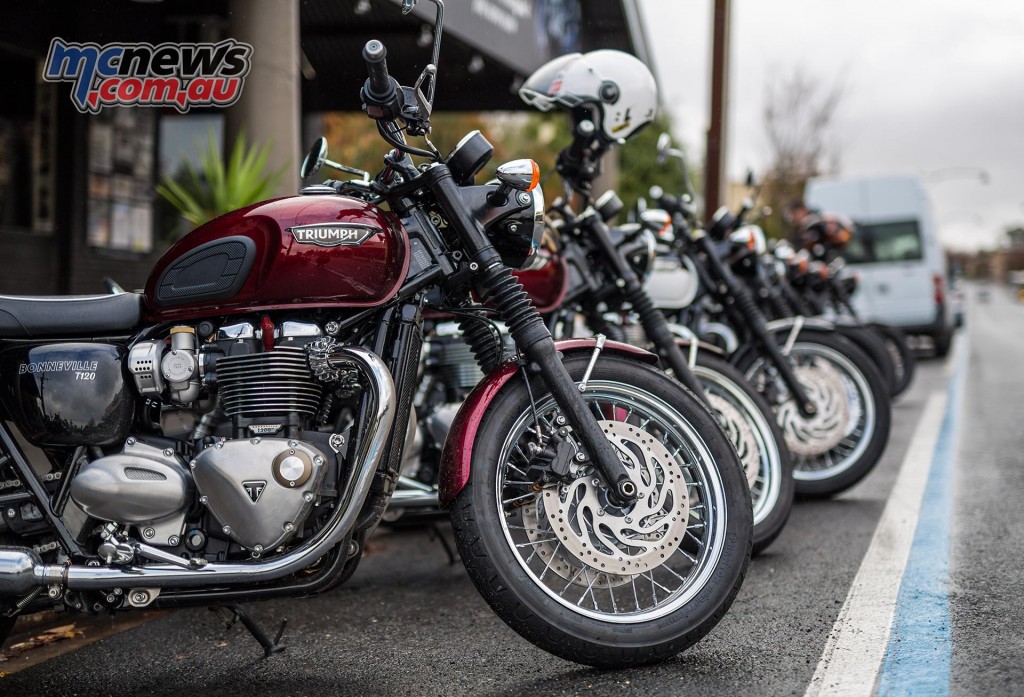
The T120 is like no Bonneville before it. Rarely has a motorcycling statement been so clear-cut.
This is a proper full-size motorcycle capable of fulfilling almost every road-going motorcyclist’s needs. It has the power, suspension and braking to take on almost every task, and not only one-up.
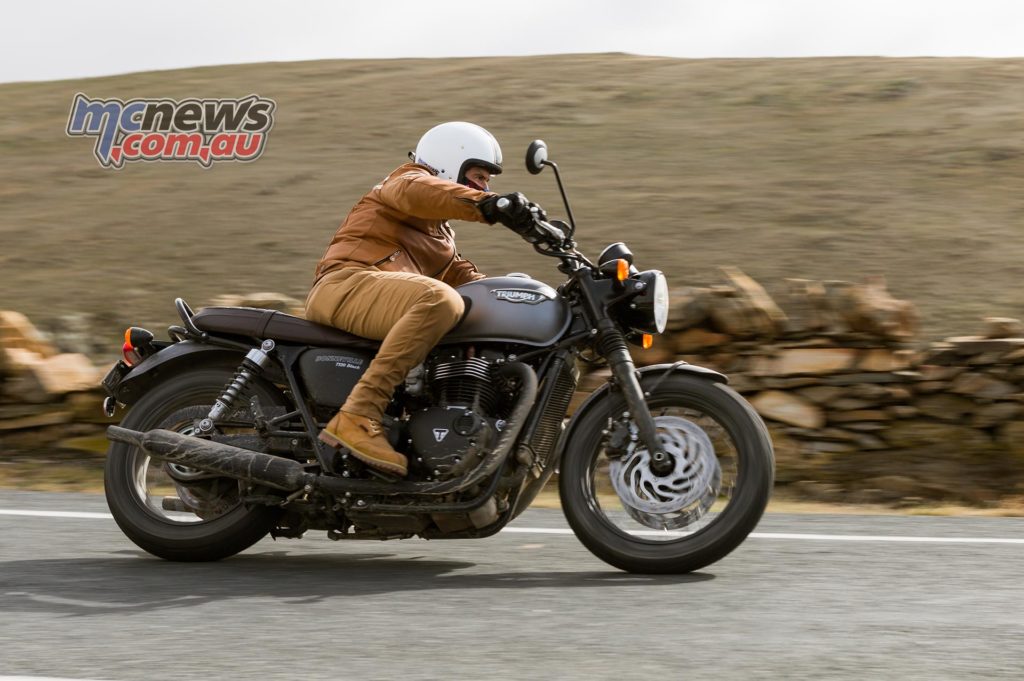
It’s good enough for you to enjoy all your motorcycling pursuits with a partner on the back. Of course, that could be done on the previous model, but the enjoyment would have come more from the shameful hilarity of the task two-up, rather than the actual fun-factor.
Obviously with an extra 300cc, the engine is going to be a lot more invigorating. But not only is there meaningfully more grunt, the whole persona of the engine character has become far more purposeful. Prodigious bottom-end stomp from idle is delivered solidly from the eight-valve SOHC parallel twin.
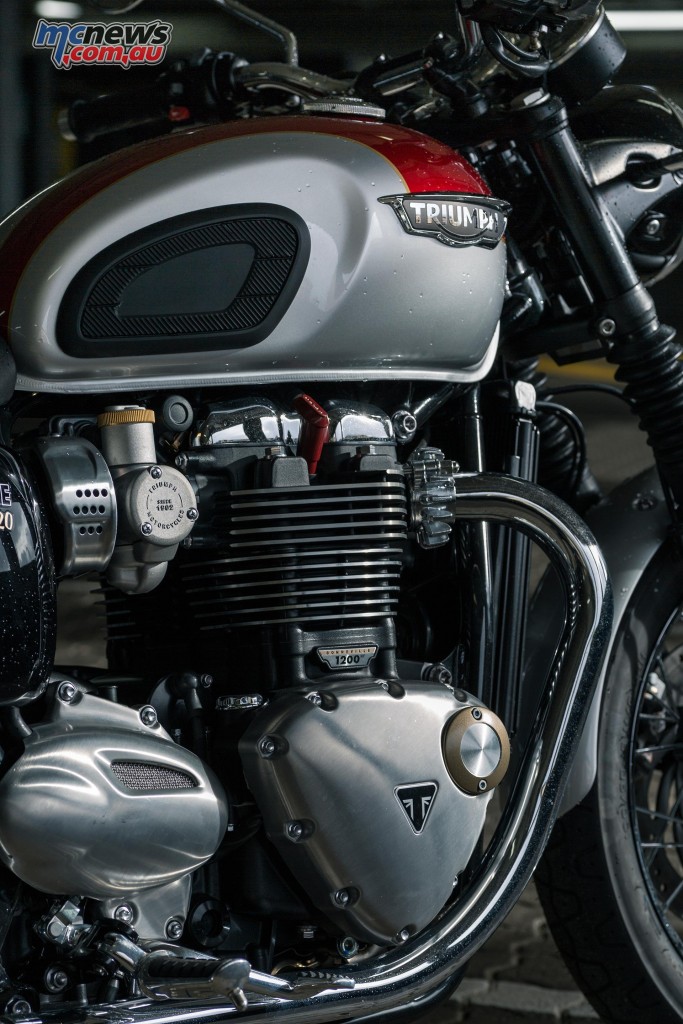
Triumph’s literature claims 54 per cent more torque than the previous Bonneville. My seat-of-the-tan-pants impressions certainly back up that claim. In fact, it feels like there’s even more than Triumph claims. You could pull a plug lead off and run the bike on a single one of the two 98 mm pistons, and it would still feel gruntier than those first new-era Bonne parallel twins.
Sure, 79hp still doesn’t sound like much, and with that power peak coming in at 6550rpm you might be forgiven for thinking this a flat, featureless engine that would struggle to make headway running into a stiff breeze. But those numbers mean nothing when the riding experience tells a completely different story.
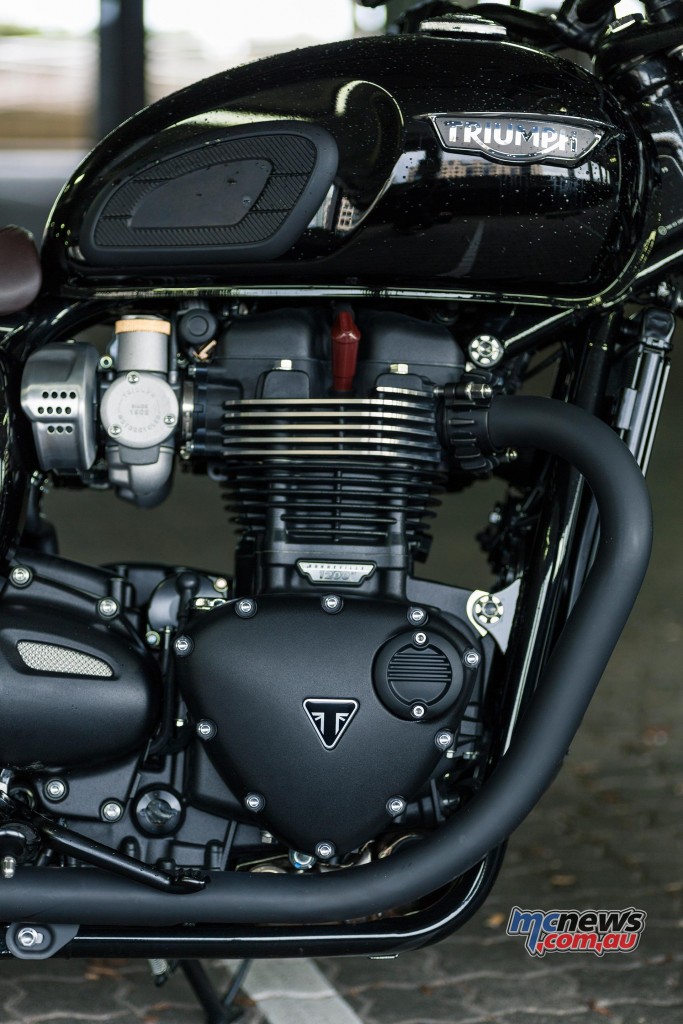
Torque is what I am talking about. And the T120 has a handy 105Nm of it at 3100rpm. But the real clincher is that 90 per cent of that is available practically from idle, and stays there right up towards that 6500rpm power peak. It is really responsive off the bottom with a refreshing urgency not found in too many modern motorcycles. It’s not snappy or impolite with its slow-speed throttle response either; a ride by wire throttle sorts those tendencies out. But it does punch hard off the bottom in a very pleasing fashion. It’s not all bottom-end though, as it does like to rev a little, and given enough road, the T120 will wind its 200km/h speedometer off the clock.
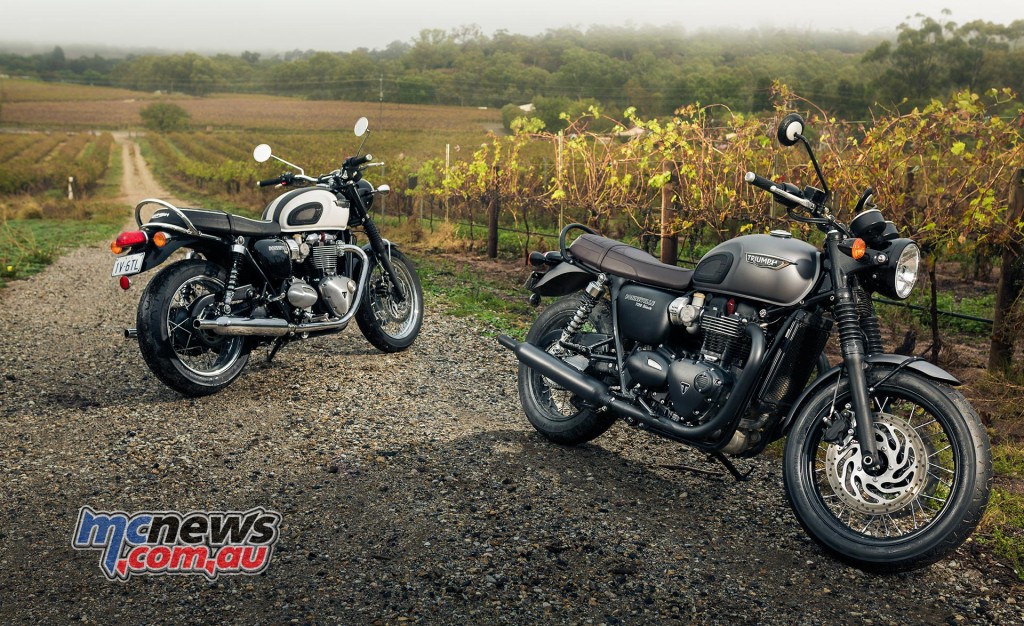
Despite the much larger capacity the engine is no bigger externally than the previous 865cc donk. Triumph also claims a 13 per cent improvement in overall fuel efficiency and service intervals are now extended out to 16,000km.
My alter-ego, the #tanterror, is now infamous from my T120 launch exploits. With some half-a-million odd views across various social media channels in various wheelie/mono or burnout videos and photographs, the T120 has shown plenty of people that it doesn’t mind lifting up its pretty skirt and getting dirty.
Some of this might have come across as needless, and some wowsers might even classify it as abuse, but in reality, Triumph wanted some fun showcased in their marketing video. I was seemingly the most qualified amongst the assembled press corps to perform such stunts without dying. Youngy could have done it with perhaps even more finesse than myself, but he was definitely not tan enough for the job. And well, I’m better looking…
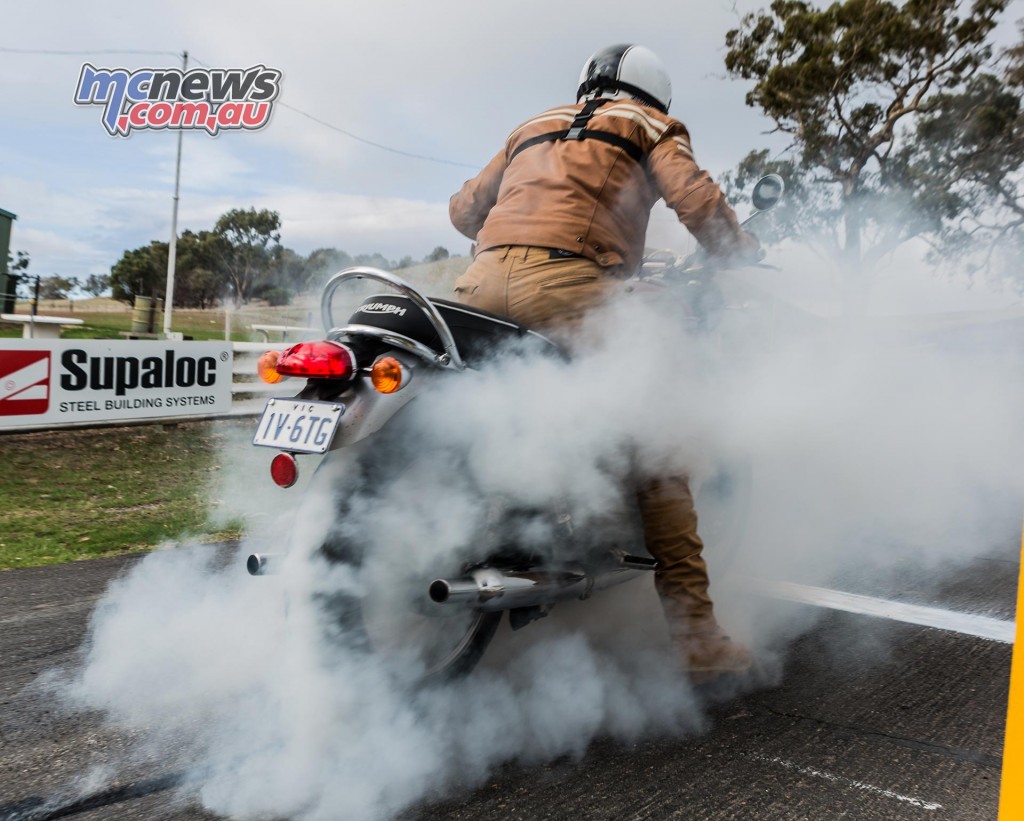
Clearly the hipster bloggers along for the ride, who from their lyrical musings seemed to think our jaunt through the countryside was in some way onerous, would have gone out in a blaze of anything but glory. One would think that before this pleasant two-day strop in the Adelaide hills, they had never actually ridden a motorcycle that performs, well, like a motorcycle should. Perhaps most of their riding entails wobbling around on some heap of antiquated shit to sip a soy latte down the next block. Looking hip whilst doing it though…
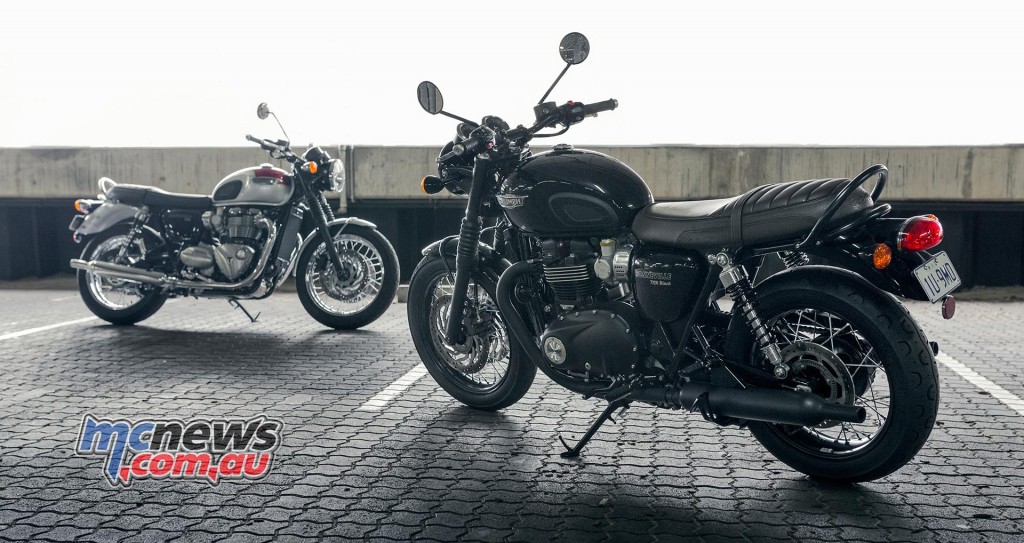
To be honest, the T120 made such stunting shenanigans quite simple. That ample off-idle grunt made standing the Bonneville up pretty simple, and the new gearbox, that for the first time in Bonneville history works exactly like a gearbox should, made clicking through a few gears while up there not all that much of a challenge.
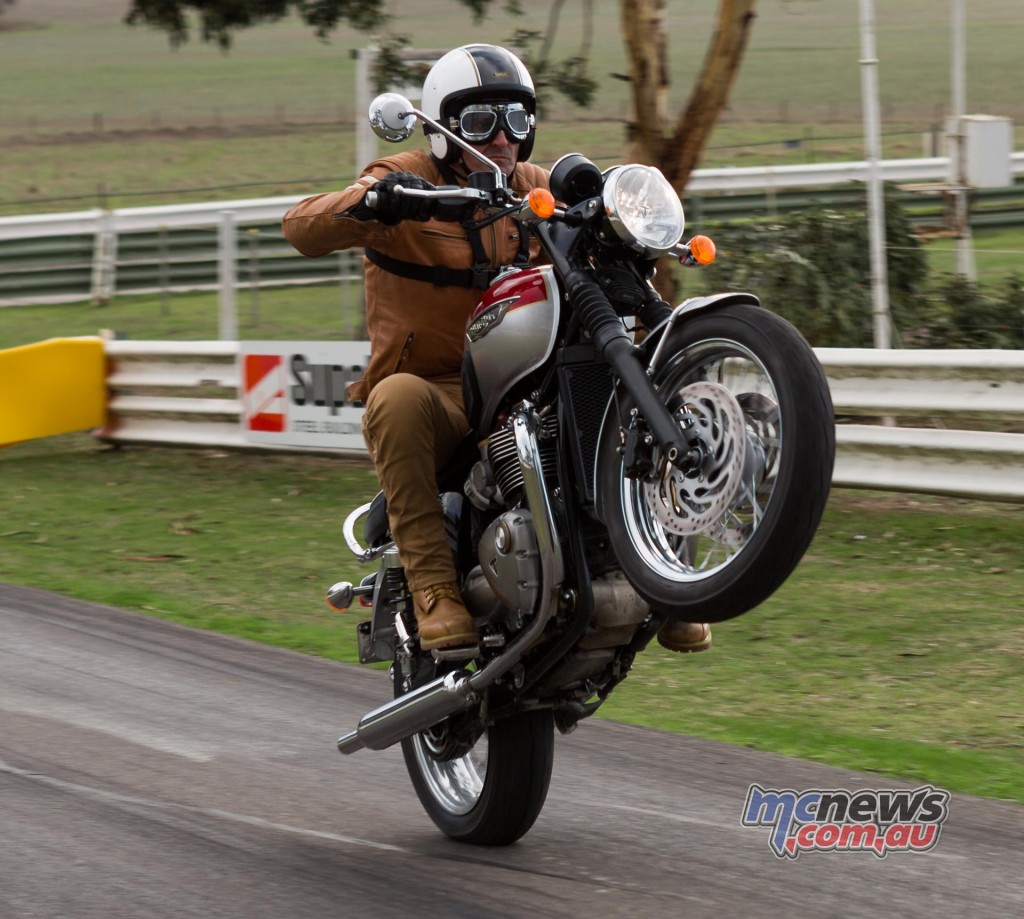
You could spend 10k on the engine of a 1200 Sportster, or even a big-cube Harley, and it still wouldn’t be as easy to mono as a T120 is out of the box. Of course the Triumph doesn’t sound like a Harley, and from the well-shaped saddle there is not much aural accompaniment to the T120 experience, but the twin low-slung peashooter exhausts do emit a pleasing bark to onlookers. Sadly, their exit points are so far back in the machine that little of that note reaches the rider. But I am sure an aftermarket exhaust would fix that.
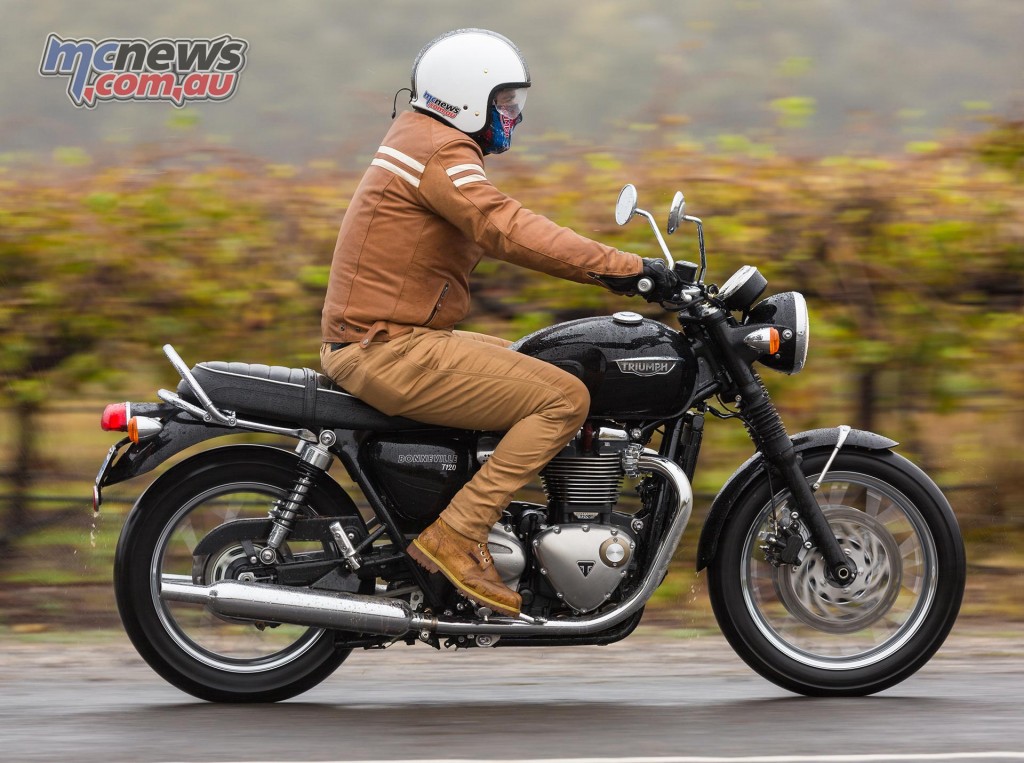
Just as big a step forward has been made with the suspension. Outwardly, it doesn’t look all that different. But it takes only minutes aboard the machine to sense the quality of the suspension internals has gone up markedly.
The damping control at both ends is impressive. Good enough to really enjoy scything through the Adelaide hills at a fairly cracking pace, and responsive enough to isolate the rider from all but the biggest of hits over the bumps. It achieves this feat not by having massive travel and soft spongy springs, but via quality damping control at both ends. This is particularly noticeable at the front, where proper cartridges now reside in those 41 mm Kayaba fork stanchions. The rear is also controlled enough to make the T120 a legitimately capable two-up bike.
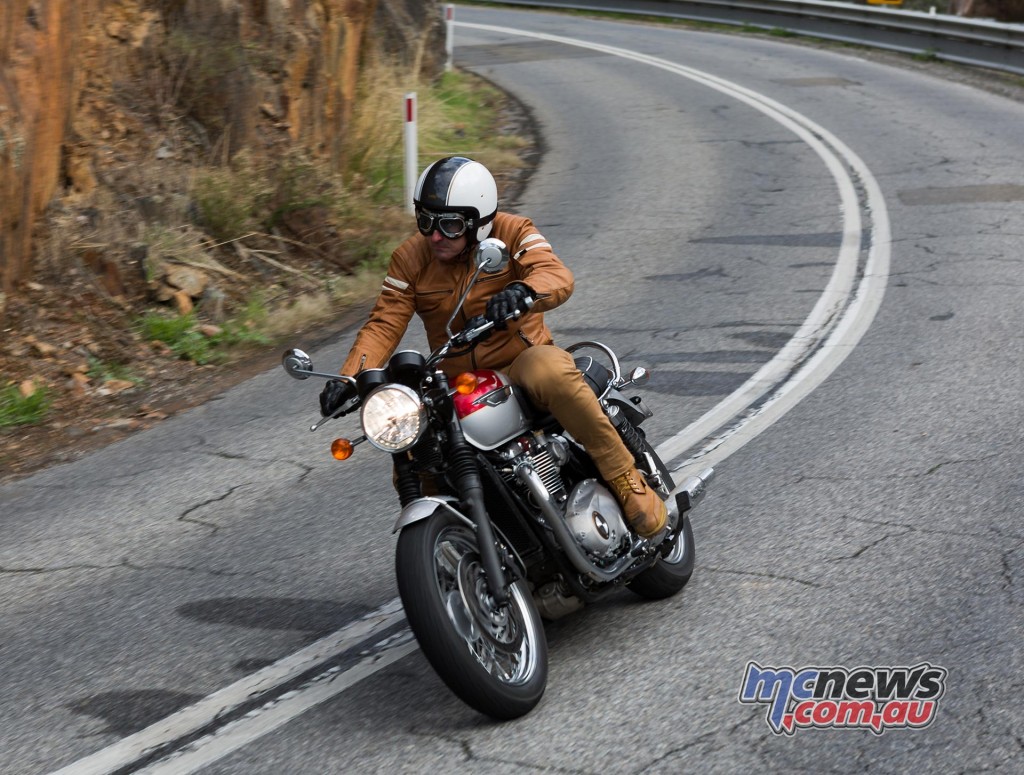
An intelligent choice of tyre sizes certainly plays a part in the handling of the Bonneville. A 100/90-18 Pirelli Phantom Sportcomp up front is well matched to a 150/70-17 at the rear. They look period pukka, wore pretty well, gave excellent grip and even smoked up a treat. The 18-inch front means the T120 is not exactly a quick steering motorcycle, that’s not really in its design brief. It turns well enough and, most importantly, never threatens to run wide.
As long as you don’t sit prone, like a dumb sack of spuds, it is quite easy to keep the T120 from scraping its pegs and I rate the cornering clearance as pretty good. If you are scraping it everywhere, I suggest you take a look at your physical attitude on the machine, and adapt to help keep the machine off the deck. It’s not hard, and as Lance Armstrong said, ‘It’s not about the bike’. No, Lance. In your case it was about the drugs…
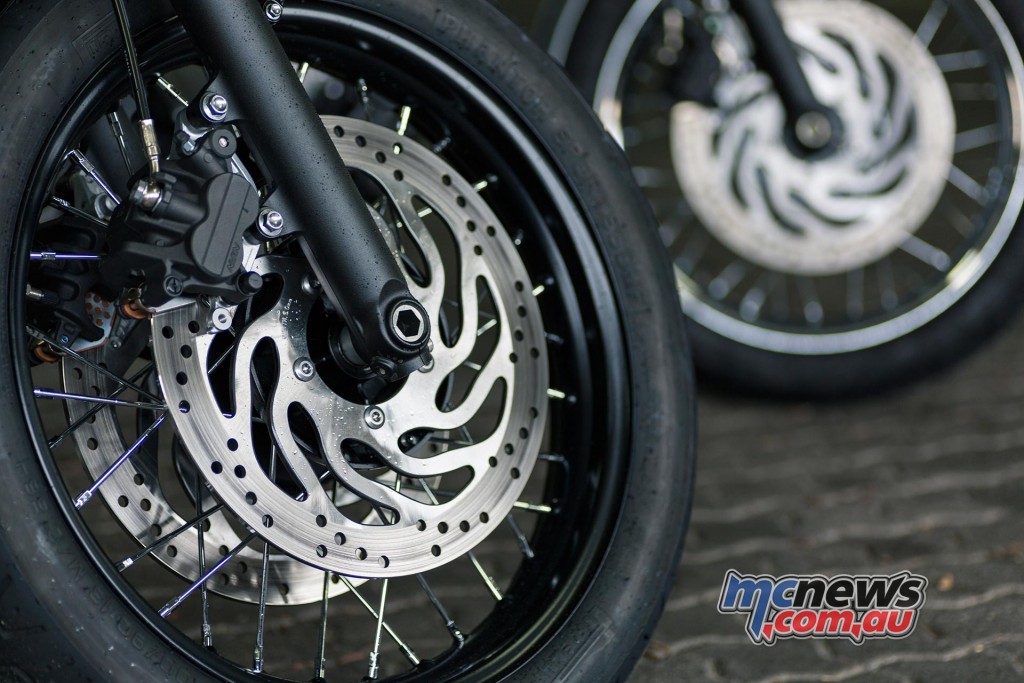
Braking performance is quite good with a twin-disc front-end gracing a Bonneville for the first time. The bite is not instant, but there is enough stopping power and overall, the braking performance matches the nature of the machine.
Is it up to the fast paced shenanigans of say a modern era Japanese retro machine such as the discontinued ZRX Kawasaki, Yamaha XJR1300 or CB1300 Honda? No, it’s not quite at the level of those bikes, but it is a lot closer than you think, and infinitely more capable than a previous generation Bonne or W model Kawasaki.
Let me make this absolutely clear, the T120 Bonneville is leagues ahead of any traditional cruiser-based motorcycle when it comes to comfort, handling, ergonomics or performance. If you think different, you are wrong.
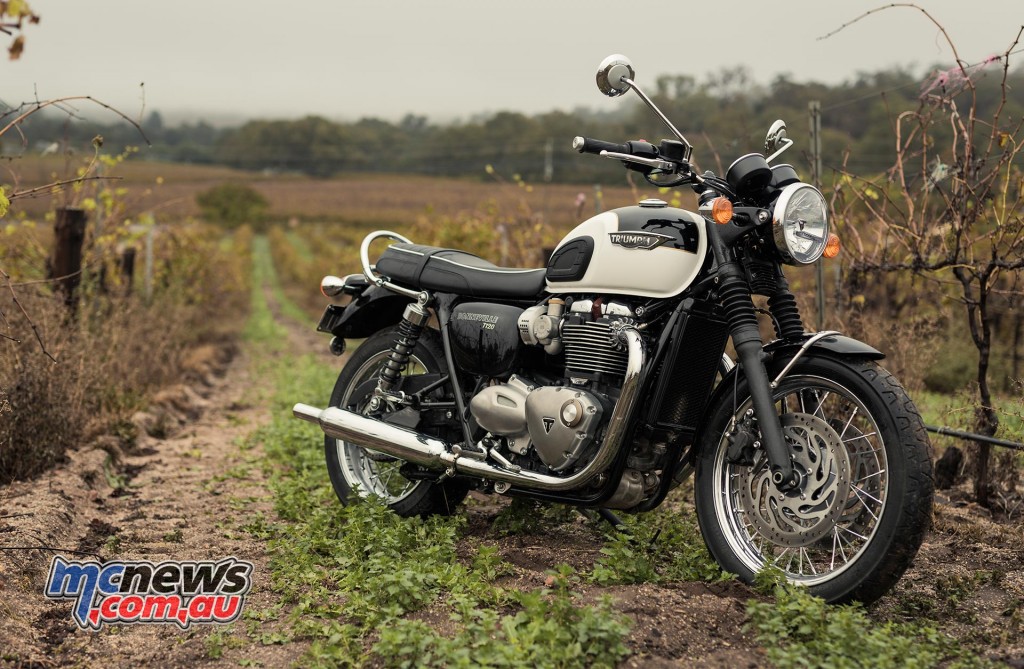
Of course people buy cruisers predominantly for their looks, and here I reckon the T120 strikes a bullseye also.
The Cranberry Red and Aluminium silver combination is particularly gorgeous but the Jet Black / Pure White combination, or the anything-but-plain Cinder Red, all look brilliant. The quality of finish is outstanding throughout and the attention to detail is really quite superb. Plenty of machines out there that cost twice this much are not finished as well.
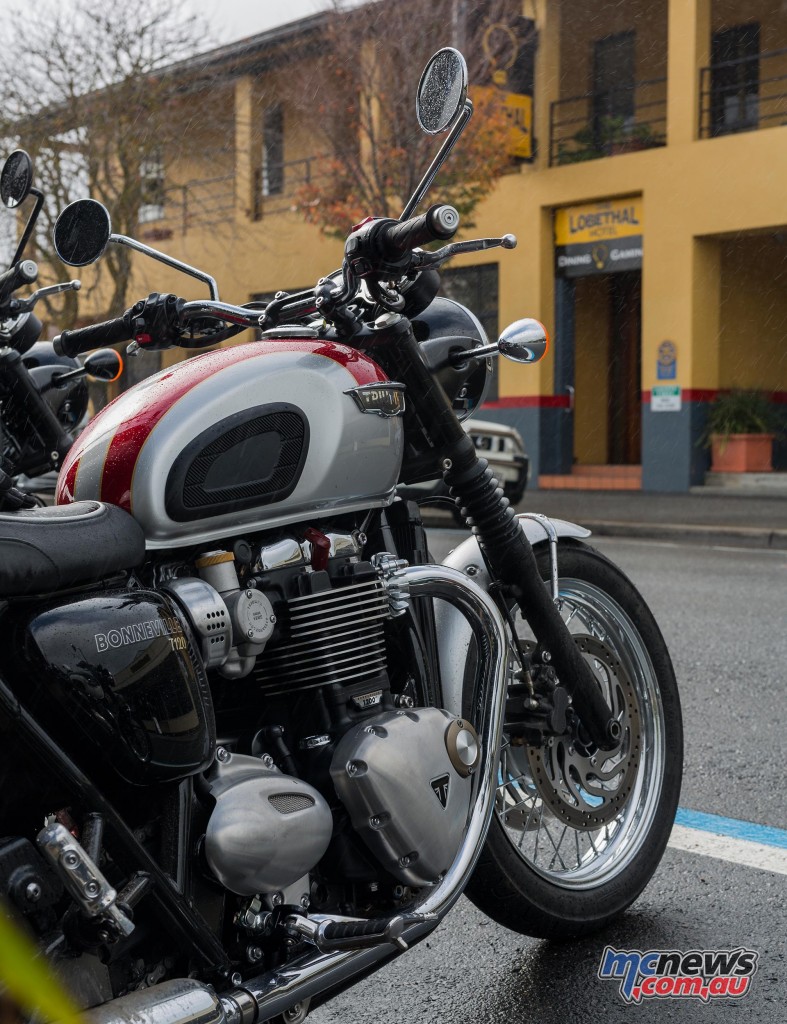
Despite its yesteryear styling cues the T120 boasts a good quality ABS and traction control system, rider modes and heated grips.
There were only two things I could really pick up on during my time with the bike. The chain adjusters on all the T120 machines I have seen have no room left for adjustment, and are at the longest wheelbase setting possible. And the alloy finish on the throttle bodies in their Amal carburettor look-alike finish quickly started showing signs of discolouration. This suggests early corrosion of the throttle bodies might be a problem for owners who want to keep their T120 looking really schmick. Everywhere else on the machine the finish is stupendously high, thus this really stood out as being a little strange.
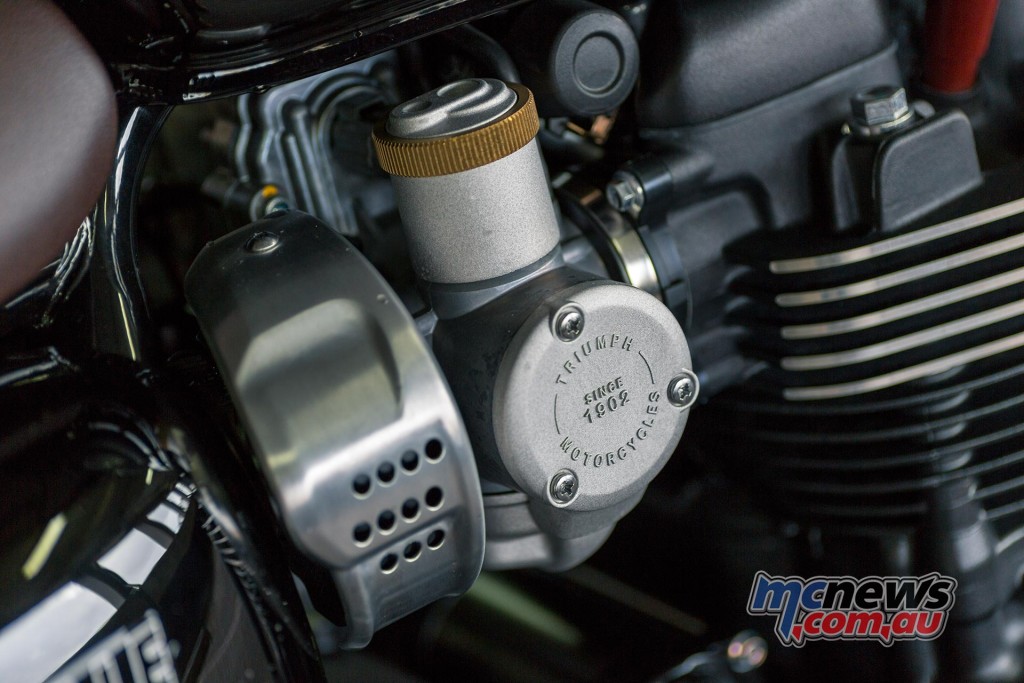
I put both these points to Triumph UK via Triumph Australia, suggesting the chain adjuster position has likely been set at full length by the factory after final dynamic tests by development riders led to the ideal wheelbase not being achieved with the already signed-off-on new tubular fabricated-steel swingarm design.
On the issue of the throttle body finish, I noted there was no clear coat and this was likely because the clear coat process had failed in final testing, and thus the decision was to not coat at all, rather than deal with customer complaints of flaking and imperfect finishes.
These two things really stuck out, as the attention to deal everywhere else is exemplary. Triumph’s response is below, and is as expected admits to no mistakes.
“The throttle body covers are made from a material we regarded as having good corrosion resistant properties, similar to that used on the engine covers, and used elsewhere on bikes. In regard to the T120 wheelbase and swingarm configuration, this was developed to optimise the riding experience and to balance stability with agility, and also provide the necessary adjustment to cater for chain maintenance.”
Personally, I still think my reasoning is the more likely scenario, and I suspect that somewhere along the build process the throttle bodies will indeed gain a clear coat and that the wheelbase measurement might somehow lengthen…
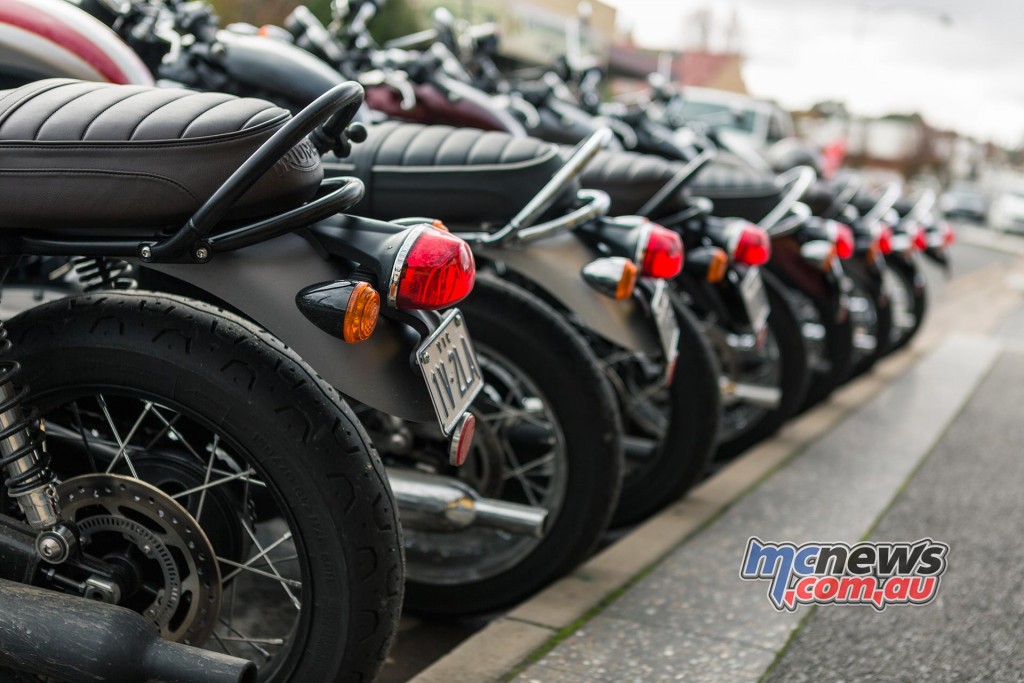
Would either of those small things turn me off buying a T120? Certainly not. It surpassed all my expectations and is a capable and extremely enjoyable motorcycle, that I rarely found wanting in any area during a spirited two-day strop in the hills across all conditions.
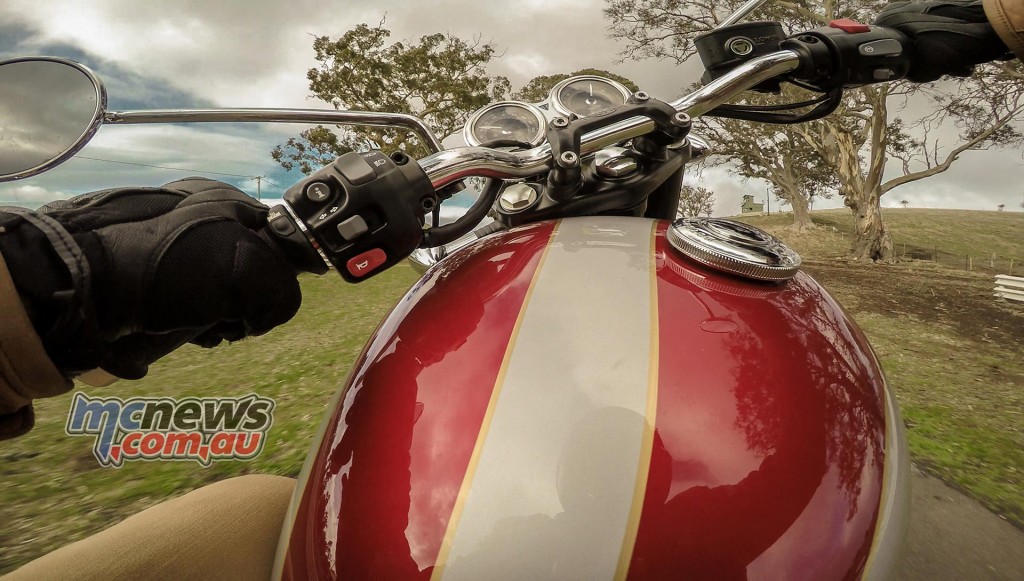
It’s a bloody gorgeous looking thing to boot; even more so up close and personal than just looking good in glossy brochure shots. I can’t imagine anyone taking one home and being unhappy about their purchase. It strikes me as a mount that would certainly grow on you over time. And one thing is for certain, the looks certainly won’t date…
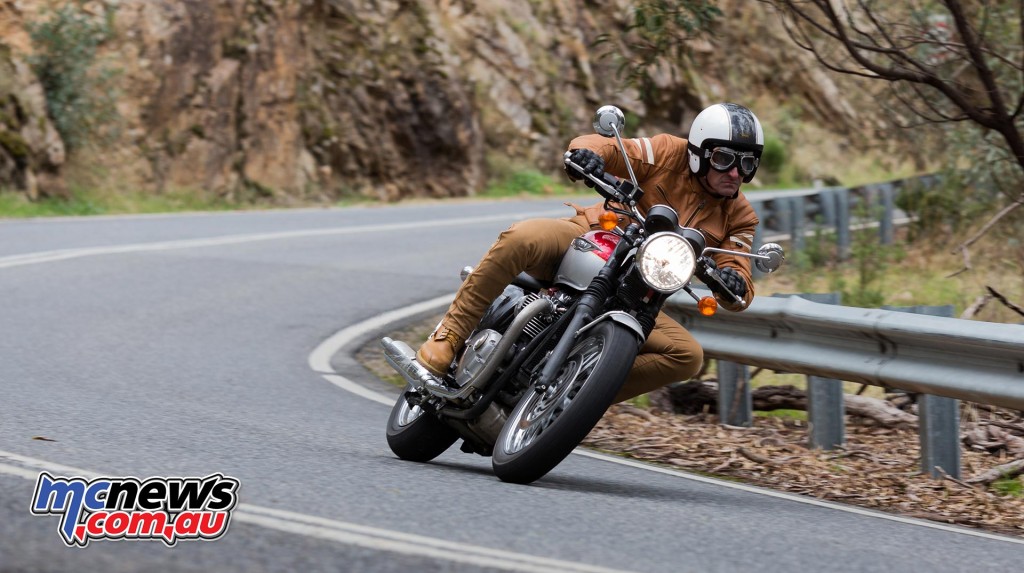
Head over to the Triumph Australia website for full specifications and pricing details.






















